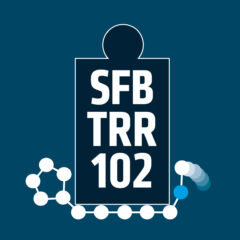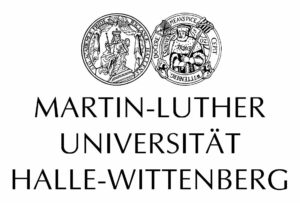Huster
The goal of this project was to understand the fundamental physical basis of protein fibril formation. We proposed to study the different stages of the self-organization process of amyloids and their structure and dynamics by NMR methods. We were most interested in unraveling what physical interactions, what kind of dynamics, and what polymer-specific characteristics influenced and stabilized the fibrillar form of a protein with respect to its monomeric chain to understand the inherent properties of amyloid forming proteins. To this end, we systematically altered well-known molecular contacts of amyloid β (residues 1-40, Aβ40) peptides by introducing physical fields into these positions or modifying larger segments of the structure. These modifications acted as internal constraints on structure formation. We analyzed the response of the system to these constraints in atomic detail using predominantly solid-state NMR spectroscopy, but also other biophysical techniques.
During the application period, we introduced new modifications of the Aβ40 sequence to better understand the process that drives the peptides into amyloids. We focused on the structurally highly important molecular contact between phenylalanine 19 (Phe19) and leucine 34 (Leu34). We further planned to combine the structure formation processes that synthetic polymers and biopolymers can undergo, which are investigated within the CRC. To this end, we proposed to investigate hybrid molecules that feature the properties of both synthetic polymers and biopolymers. Furthermore, we studied polymer/peptide chimera that contained essential building blocks and properties from the amyloids (i.e., the cross-β structure) and the specificities of the polymer structure formation (such as the lower critical solution temperature). Thus, the structure formation of one component of the hybrid became the constraint for the structure formation of the other and vice versa. Depending on the size of each molecular component, which could tune the interaction energies, we expected to be able to modify the structure formation processes and observe the transition from a polymer-dominated structure formation to an amyloid-dominated structure formation.
Highlighted Publications:
- Benedikt Schwarze, Alexander Korn, Corinna Höfling, Ulrike Zeitschel, Martin Krueger, Steffen Roßner, and Daniel Huster, Peptide backbone modifications of amyloid β (1–40) impact fibrillation behavior and neuronal toxicity Sci. Rep. 11, 23767 (2021)
- F. Hoffmann, J. Adler, B. Chandra, K. R. Mote, G. Bekcioglu-Neff, D. Sebastiani, and D. Huster, Perturbation of the F19-L34 Contact in Amyloid β (1-40) Fibrils Induces Only Local Structural Changes but Abolishes Cytotoxicity J. Phys. Chem. Lett. 8, 4740-4745 (2017)
- J. Adler, H. A. Scheidt, M. Krüger, L. Thomas, and D. Huster , Local interactions influence the fibrillation kinetics, structure and dynamics of Aβ(1-40) but leave the general fibril structure unchanged Phys. Chem. Chem. Phys. 16, 7461 (2014)


